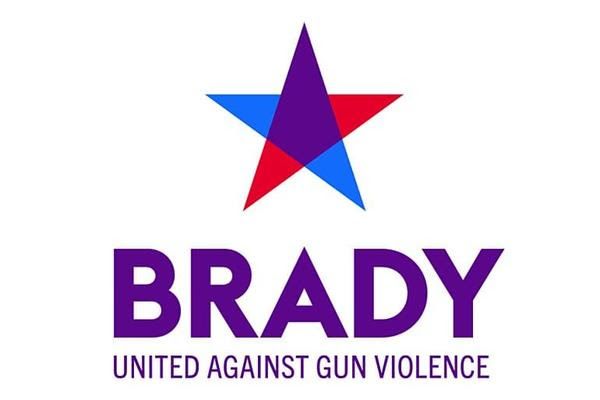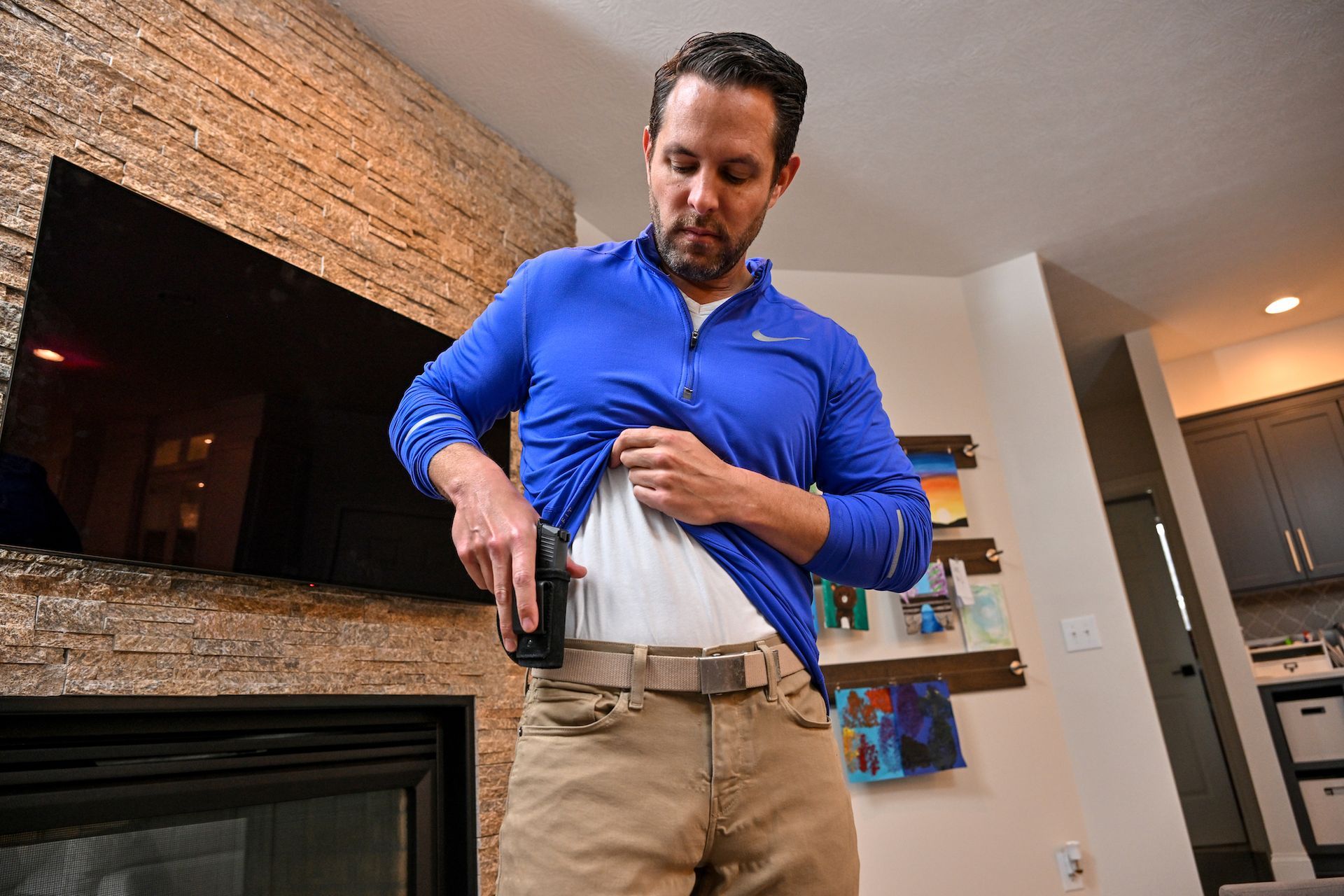Gregory Kielma • December 25, 2024
Countries That Took Their Citizens’ Guns – What Happened Next?

Countries That Took Their Citizens’ Guns – What Happened Next
©Mitch Barrie - by Mitch Barrie
Gregg Kielma
FFL-Firearms Instructor-First Aid Fundamentals Instructor-Gunsmith
AED Defibrillator Sales
As 2024 comes to an end, there have been approximately 385 mass shootings in the United States, which continues to be a driving force around those who want to see more gun control. While the Second Amendment protects the right to bear arms, this issue has become even more contentious as school and workplace shooting numbers are moving in the wrong direction.
Key Points
• Gun restrictions have been met with varying success, depending on the country.
• The United States is unlikely to enact any broad sweeping gun restrictions in the future.
• Some countries have restricted gun ownership out of fear of a public uprising against authoritarian or Communist leadership.
While the US continues to debate gun ownership, there are lessons to be learned from countries that have already gone down this path. With varying degrees of success, some nations, like Australia, China, and the United Kingdom, have banned guns outright to varying levels of public opinion. It's these countries that may one day help guide the US on what any sort of gun ban fallout could be.
12. Brazil
• Gun law enacted: 2003
• Brought on by: Brazil's disarmament policies were put in place to help curb the country's high firearm-related death count
• Government response: The government established the Disarmament Statue in 2003, only to pull it back with reforms in 2019 and 2021 with moderate success
Brazil's 2003 Disarmament Statue was put in place as a result of 36,000 gun-related deaths in the same year, leading to a 12% drop in firearm deaths over the next decade. The statute called for increased background checks and mental health reviews, as well as providing a "genuine need" to the government as to why you should own a firearm. There is a growing movement in the country to reduce gun restrictions so Brazilians can protect themselves in high-crime areas.
11. China
• Gun law enacted: 1966
• Brought on by: The government sought to stop potential uprisings during the country's Cultural Revolution
• Government response: Under Mao Zedong, the Chinese government pulled guns off the streets and enacted strict penalties for ownership
In modern-day China, should you be caught with an illegal firearm, the penalty is severe and can include up to life in prison. On the positive side, gun-related crimes are very rare in China, and the country has a very low firearm-related death number. Still, critics of the 1966 gun ban in China can't help but claim this policy was put in place to boost authoritarian rule and prevent any uprisings against China's Communist Party power.
10. New Zealand
• Gun law enacted: 2019
• Brought on by: 51 people were killed at two Mosques in the country using legally purchased semi-automatic rifles, causing a massive outcry among the public
• Government response: The government of New Zealand moved fast to enact gun reforms with strong support, including a national gun buyback program
Almost immediately, the reaction to the new gun law in New Zealand was positive. A national buyback program resulted in over 56,000 firearms being turned over. While gun owners complained, the government quickly considered the program a success in removing thousands of high-risk weapons off the streets. There is still a small but vocal movement of New Zealanders that continue to reject this gun policy as not going far enough to address illegal firearm possession, which still poses a threat.
9. Japan
• Gun law enacted: 1958
• Brought on by: Heavily influenced by post-World War II reforms enacted by the US to demilitarize Japan
• Government response: The people of Japan at this time were removed from their wartime mindset of a decade before and have typically shown an aversion to firearms
While violence can certainly take place in Japan, the country has one of the lowest firearm-related death rates annually. It's believed less than ten people die per year in the country because of a firearm. The country has long been focused on nonviolence. While some groups argue firearm laws are too restrictive
8. Germany
• Gun law enacted: 2003
• Brought on by: A 2002 school shooting where 16 young adults and children were killed
• Government response: Government action was swift and looked to enhance background checks, as well as add restrictions around semi-automatic weapons and high-capacity magazines
Germany was already home to one of the lowest firearm-related deaths in the world at the time of the 2003 shooting. The country was already averaging only 1 per 100,000 people annually killed as a result of a firearm. However, since the 2002 shooting, the German public has been extremely supportive of gun control as a public safety measure.
7. Norway
• Gun law enacted: 2018
• Brought on by: A 2011 school attack where 77 people were killed using a legally purchased rifle and pistol
• Government response: The government moved to ban semi-automatic rifles in 2018
While Norway was already a country where firearm-related deaths were already low among Western nations, the government's action led to stronger gun restrictions, which was a response to a public outcry after the 2011 attacks. While Norway has a history of hunting, the firearm restrictions enacted in 2018 respect these traditions while ensuring that hunting licenses require extensive background and mental health checks.
6. Venezuela
• Gun law enacted: 2012, 2017
• Brought on by: Increasing gun violence and one of the highest homicide rates in the world
• Government response: The government enacted two separate policies under Authoritarian rule to restrict firearm ownership
In 2012, Venezuela's Authoritarian ruler, Nicolas Maduro, enacted the Control of Arms, Munitions, and Disarmament Law, which set forth a group of tight and restricted gun policies. While the move was seen as more political in an effort for Maduro to stop an uprising and stay in power, civilians were prohibited from owning firearms and ammunition, except for security firms or government loyalists. This policy continues to this day and has done little to quell the violence in the country.
5. Yugoslavia
• Gun law enacted: 1945-1991
• Brought on by: The Communist government's desire to maintain law and order
• Government response: During this period, civilian ownership of firearms was heavily regulated, and guns could only be used by government officials, military, and law enforcement
Before Yugoslavia was dissolved as a nation, it was a Communist country, and as a result, access to firearms was heavily restricted. In other words, the government had complete control over weapons access to prevent armed uprisings. After the country dissolved, firearms poured into the country, introducing a whole new set of conflicts, which eventually led to the Bosnian War.
4. Russia
• Gun law enacted: 1917 – 1991
• Brought on by: The Bolsheviks wanted to maintain gun control to prevent an uprising
• Government response: During this period in Russian history, private gun ownership was severely restricted, and citizens could only own firearms for hunting
While Russia is far more flexible with firearm laws, Russia between 1917 and 1991 under Communist rule was a very different story. Strict gun laws within the Soviet government were set up to limit the opportunity for armed resistance to form. After the collapse of the Soviet Union in 1991, civilians can now own hunting rifles and small-caliber firearms, which are heavily regulated. Still, unauthorized firearm possession remains a crime punishable by prison or worse.
3. Canada
• Gun law enacted: 1995
• Brought on by: Mass shootings beginning in 1989 with the Ecole Polytechnique massacre, which led to the death of 14 women
• Government response: Canada enacted significant gun reform laws in 1995 with the Firearms Act and then additional measures in 2020 and 2022
As a result of the Firearms Act and the ban of over 1,500 assault-style firearms by Prime Minister Justin Trudeau in 2020, firearm-related deaths in Canada are far lower than that of its neighbors to the south. Polls continue to show that most Canadians are in favor of strict gun control measures, so there continues to be a government mandate to maintain the current status quo around firearm measures.
2. United Kingdom
• Gun law enacted: 1997
• Brought on by: Dunblane school massacre in 1996 when 16 children and teachers were killed with legally-owned handguns
• Government response: Public outcry led to the Firearms Amendment Act in 1997, which banned most private handgun ownership
In the aftermath of the school shooting, Prime Minister John Major banned all handguns in mainland Britain and enacted strict background checks, safe storage requirements, and mental health evaluations. Within a decade, gun homicide rates were among the lowest in the world. In addition, over 162,000 firearms were surrendered with a buyback program. However, knife-related crimes increased in Britain, which was an indicator of the change in criminal behavior in the country.
1. Australia
• Gun law enacted: 1996
• Brought on by: Port Arthur Massacre, where 35 people were killed
• Government response: Introduction of the National Firearms Agreement, strict gun control measures, and a ban on semi-automatic rifles and shotguns
After Prime Minister John Howard introduced the NFA, Australia also initiated a gun buyback program, which destroyed 650,000 firearms. As a result, gun violence in Australia has seen a 59% reduction in firearm-related homicides and a 65% drop in suicides. More importantly, there hasn't been a single mass shooting of five or more people in the country since the NFA was enacted in 1996.

More Mixed Signals From The U.S. Justice Department On Second Amendment Support We’ve reported lately how the U.S. Department of Justice (DOJ) seems to have a somewhat schizophrenic attitude when it comes to supporting the Second Amendment. On one hand, the DOJ claims to be doing everything it can to restore Americans’ 2A rights. On the other hand, DOJ attorneys will defiantly argue in support of an obviously unconstitutional infringement. In late November, the Firearms Policy Coalition (FPC) and Second Amendment Foundation (SAF) lambasted the DOJ for trying to limit a critical Second Amendment court ruling. After a court ruled that the nationwide ban on concealed carry in post offices is unconstitutional, the DOJ filed a motion to limit the scope of the injunction to only the named individual plaintiffs and to members of SAF and its partner organizations, but only to those who were members when the complaint was originally filed and who have been identified and verified. In other words, the government wants to keep the ban intact for the rest of America’s lawful gun owners. “The critical thing to remember here is that the government is fighting tooth and nail to continue enforcing an unconstitutional law against as many people as possible,” SAF Executive Director Adam Kraut said. “The DOJ’s position that it would be ‘impossible’ for it to know who was protected by the injunction without a membership list is just plain silly. If officials want to know if someone found to be carrying at a post office is a SAF member, they can simply ask.” Less than a week later, Reuters published information about a leaked DOJ plan to expand gun-rights protections with a new office in its civil rights division dedicated to enforcing the U.S. constitutional right to bear arms. The office, called the Second Amendment Rights Section, is expected to open on December 4 and will be dedicated to investigating local laws or policies that limit gun rights, something the Trump Administration has promised since its first week in office.

Michigan Governor Whitmer Surprise: Whitmer’s Anti-Gun Task Force Says Stricter Gun Laws Are The Answer To Violence Mark Chesnut “Garbage in, garbage out” is an old computer science axiom that describes how flawed, biased or poor-quality input will produce equally flawed, biased or poor-quality output. Of course, the principle doesn’t only apply to computer science. The entire gun control world often operates on this same premise. So, consider how unsurprising it truly is that a task force that Democrat Michigan Gov. Gretchen Whitmer created to make policy recommendations to curb violence is urging state lawmakers to ban the possession of so-called “assault weapons” and “large-capacity” magazines. According to a report at michiganadvance.com, Dr. Natasha Bagdasarian, the state’s chief medical executive and the task force’s chair, said the group used a “public health” approach to addressing “gun violence” in the state. “There are a lot of issues here that have not historically been thought of as public health issues, and only when we’ve taken this really comprehensive public health approach have we been able to implement real change,” Bagdasarian told the newspaper. “Gun violence is one of those issues.” It’s easy to immediately see how much garbage went into this project, resulting in the garbage that came out. First, Whitmer tasked the group with finding an answer to the “gun violence” problem. That is, indeed, garbage.

Florida: Pro-Gun Bill Repealing Adult Age Discrimination Advances to House Vote Yesterday, the House Judiciary Committee voted 13-7 to favorably report pro-gun House Bill 133, which restores the ability for young adults to lawfully purchase firearms. The bill now heads to the full House, where it is eligible for a vote when the 2026 regular session begins in January. House Bill 133, sponsored by Rep. Tyler Sirois, restores the ability for young adults to acquire firearms by lowering the minimum age requirement to purchase from 21 to 18. Since 2018, Florida has completely banned 18-to-20-year-olds from purchasing a firearm of any kind, for any purpose. A young adult in violation faces stiff penalties, including up to five years of imprisonment, a fine of up to $5,000, or both. On May 16th, the NRA filed a petition for a writ of certiorari in NRA v. Glass, requesting that the U.S. Supreme Court hear its challenge to Florida’s law prohibiting adults under 21 from purchasing firearms.

Brady X Poster Gets Undies In A Bundle Over ‘Less-Than-Lethal’ Weapons Proposal Mark Chesnut When an organization goes somewhat berserk on social media, passionately stringing post after post together ostensibly to make some kind of point, you’d normally figure that topic is probably a top priority of that group. That’s why gun-ban group Brady’s recent freak out over less-than-lethal weapons is somewhat bewildering. Brady: NONSENSE Brady, formerly called Handgun Control Inc. before leaders learned that most Americans were against “controlling” handguns, has never seen a gun control scheme that it didn’t embrace. But until the recent flurry of social media activity, so-called less-than-lethal weapons didn’t seem to be on the group’s radar much. That changed big time on November 19, when whoever was handling the organization’s X (formerly Twitter) account. “While the world focused on the Epstein files, Congress took up a dangerous bill that sponsors say is to help law enforcement get greater access to ‘less-than-lethal’ weapons,” Brady posted in a typical manner critical of anything seemingly in the pro-self-defense category. “In reality, it deregulates dangerous weapons to help a billion-dollar weapons industry make more money.” That’s all well and good, but the author seemed not to be able to let the matter go, soon posting more on the topic just a few minutes later. “This bill isn’t from a well-intentioned lawmaker or a group working to prevent deadly police violence,” Brady posted. “It’s backed by the manufacturers of so-called ‘less-than-lethal’ weapons, like tasers, who have started making products that are appropriately classified as guns under the law.” Still apparently not having said enough, the Brady writer entered rant mode with yet a third post a short time later. “In their effort to skirt the regulation of their products, this bill would narrow the definition of firearm and open a new market for untraceable ghost guns, which have already led to thousands of deaths in the last decade,” Brady posted.

Extremely Troublesome Department Of Justice Brief Draws Stark Warning From GOA Mark Chesnut A bold brief, recently filed by the U.S. Department of Justice (DOJ) in a case challenging the National Firearms Act (NFA), has one gun-rights organization sounding an alarm. According to Gun Owners of America (GOA), on November 20, the DOJ, in the case Silencer Shop Foundation v. ATF, filed an “outrageous brief that embraces an alarmingly expansive theory of federal authority.” That assertion runs directly afoul of President Donald Trump’s promise to protect the Second Amendment for all Americans. In responding to GOA and GOF’s “One Big Beautiful Lawsuit,” the DOJ treats Congress’ removal of the historic $200 tax as a pretext to rewrite the limits of congressional power, advancing an argument that would open the door to federal regulation far beyond anything the Framers intended. “GOA and GOF condemn Attorney General Pam Bondi and President Trump’s Department of Justice (DOJ) for doubling down on enforcement of an archaic and unconstitutional law while simultaneously offering legal theories that would expand federal power to historic levels,” GOA said in a news release revealing the DOJ’s actions. “This is especially striking from an administration that had promised to respect the Second Amendment and review burdensome agency rules.” As GOA further explained, the implications of the DOJ’s stance are immediate and ominous.

If you have a concealed carry permit and you have a gun with you, and you walk into or need to go into a store that doesn’t allow guns, what do you do? Says Kielma, this is an easy one for me. I do not and never will enter a place that has ca no "firearms allowed" , ever. I’ll spend my hard-earned CASH SOMEPLACE ELSE. If I miss the sign by accident and enter then, I’ll suffer the consequences. NOTE: Please check for signs on doors. Keep your firearm concealed and no one should bother you if you miss the door sign. Let’s take a look at BOB an avid reader of my website would do: I have a concealed carry permit, and I carry concealed all the time. Concealed means unseen. Unless they have metal, detectors and security guards wandering, I simply ignore the signs. The difference would be places whereby actual law, you cannot be armed on the premises. Federal and government buildings for instance. True story. We went to see a show. We had to park some distance away and when we got to the place to present our tickets… you guessed it, they were wanding everybody. My wife says to me, “well, you've got your ticket and seat assignment, hurry back.” I just nodded and stayed in line. When she got up there, they wanded her and glanced in her purse. I was next. I told the female doing the wanding that I was going to set things off because I had a lot of metal on me. I then pulled a suspender strap from under my coat and showed her the metal concho on it. She told me OKAY, swiped the wand down my front and back - it went off - and she waved me through. When we took our seats my wife side mouths to me, “one day you're going to have to tell me how you did that.” “Old Jedi mind trick I replied, these are not the droids you're looking for.” What was I carrying? Full size main firearm with two backup magazines, backup firearm with two speed strips, Leatherman Wave, Swiss Champ, Thru Nite flashlight, neck knife and a couple other pocketknives and a smartphone. Several points: No place on the tickets did it say no firearms or pocketknives. Matter of fact there was no mention of security. This was a public venue. I had already paid to be there. My permit was valid in the State I was in. Concealed means just that. My 4th Amendment rights didn't evaporate with my purchase of a ticket. The fact I got through security meant others may have too. Was this event taking legal responsibility for my security and that of my family? Of course not. As we were leaving my son said, “so much for their security.” He was right. Security unless you have the Secret Service providing it is pretty much an illusion/delusion.

What's more powerful than the .308 and .30-06 for certain types of hunting? How does it compare? What do you think? .45 70? Gregg Kielma .45-70 ? As a straight-walled cartridge, it and similar types of ammunition are favored for deer in states were bottlenecked cartridges, such as 30–06, cannot be legally used. In its original loading, it delivers 2,221 joules of energy but has been loaded much hotter to the point that 3800–4600 joules are possible. A standard .308 load delivers around 3600 joules and 30–06 around 3800. It is a good example of “knockdown power" type of ammunition in that a large chunk of lead, traditionally not moving as fast, hits hard because of its mass. More modern cartridges made use of smaller bullets and smokeless powder to create ammunition that hits hard with a moderate projectile and much higher velocity. The tradeoff is that .308 and .30–06 have far less muzzle drop at long ranges. Off the top of my head, the projectile drops something like 4′ at 400 yards, but it has been a while since I looked that up. .308 is much flatter shooting. Just my opinion. What do you think?

Is it safe to unload a handgun every time we get home? Gregg Kielma This depends on several different situations. You must find what works better for you, and your family. They did that for years in the military. They would safe and clear everyone’s weapons before they went into the mess halls. They would take a pistol out of a perfectly solid holster that could be dropped out of an aircraft and not go off and proceed to pull the slide and the trigger into a clearing barrel to make sure it was empty. Occasionally it wasn’t. It was a bad idea. So eventually they stopped having people do it and do you know what!? No one was shooting guns in the mess hall. Every time you handle or have people handle guns they can go off. Especially WHEN PART OF THE PROCEDURE IS PULLING THE TRIGGER. A better procedure is NOT TO PULL THE TRIGGER. Again, if your weapon is loaded, the firearm you carry should be. You shouldn’t unload it unless you are cleaning it or are going to swap it out with another carry weapon in the gun safe. It is said that you do need to release spring tension on magazines, it is said by all the old guys, but that is every few years and you should be cleaning any gun more often than that. Loading and unloading your weapon every single day is something I suppose you could do. I wouldn’t if I wasn’t being paid to do so. My EDC stays loaded for a few months at a time. Then I cleaned it and get it ready for another 3-month tour. Every time you mess with a gun you have the chance of an accidental discharge. It is designed to sling supersonic metal out the front of it. Accidents happen every single day and the way to increase the number of accidents is unnecessary gun handling. Do not push yourself past competence and into complacency. Let’s Take a LOOK: • You do something a hundred times, and you get good at it. • A thousand times and you get great at it. • You do it 6,000 times and you get complacent because you have done it TOO much and that is when you get bit. That is why you can’t do the same job for decades and maintain the same exact level of proficiency. Chances are you may or will get careless.

I have a concealed permit to carry and if I find myself in a threatening situation, can I show it to defuse the threat without it being seen as brandishing even though it resolved peacefully? Gregg Kielma Gregg Kielma gets asked this question a lot. Says Kielma, “I get asked this a lot and can give you what I’d do if I was in a bad situation I didn’t start nor could not avoid or escaped from. Let’s take a look”. Never pull a weapon to threaten and never fire a warning shot in life-threatening situations. If you reveal a weapon, someone might rush you, disarm you, and use it against you. If you are in a life-threatening situation, stay calm and use verbal de-escalation without making threats. If that fails and you're confronted by a violent person, do not let them get close—keep moving back and maintain at least 25 feet of distance. If they get any closer or fail to comply with your instructions, in a loud voice shout, drop your weapon, drop your weapon. As a last resort and only as a last resort, draw your weapon and fire shots at center mass. Continue firing until there is no longer a threat. When you shout "drop your weapon" it lets others know you felt threatened. If a shooting occurs, you will be arrested—do not speak to police without an attorney present. Invoke your 4th and 5th amendment rights. Tell them you'll provide a full statement once you have legal counsel; you only get one opportunity to do so properly. You cannot hesitate in a life-or-death situation. If you do, you will be among the dead. Kielma’s final thought, says Gregg, “please take my training CCW course. I provide a lot of information in the class that is easy to understand and may keep you out of jail and alive.

Indianapolis Pimp Given Three Life Sentences in Federal Prison for Running Sex Trafficking Enterprise and Committing Murder Tuesday, November 25, 2025 U.S. Attorney's Office, Southern District of Indiana Editor's Note: This sentencing occurred on September 25, 2025, but was not published at that time due to government shutdown. Press release posted and made available following the return to normal operations. INDIANAPOLIS- Kristopher McDonald, 37, of Indianapolis, has been sentenced to three life sentences in federal prison. In May of 2025, a federal jury found McDonald guilty of the following eight counts related to his operation of a violent human trafficking enterprise: Count 1: Murder in aid of racketeering activity. Count 2: Brandishing and discharging a firearm during a crime of violence. Count 3: Possession of a firearm by a convicted felon. Counts 4 & 5: Sex trafficking by force, fraud or coercion. Count 6: Enticing an individual to travel in interstate commerce to engage in prostitution. Counts 7 & 8: Travel act; a federal crime to engage in interstate or international travel, for the purpose of furthering certain "unlawful activities.” According to trial testimony, from June 2023 through April 2024, Kristopher McDonald orchestrated and led a human trafficking operation in Indianapolis and other states. During this time, he recruited and exploited women, some from out of state, for commercial sex, maintaining strict control over the operation. McDonald managed all aspects of the criminal enterprise, using force, fraud, and coercion to control the activities of the women. McDonald recruited the women over the internet, making false promises to them to lure them into his enterprise. He then used several means to manipulate and control the women to engage in commercial sexual activity. McDonald limited the victims’ access to the outside world by taking control of their personal identification, cash cards, and cellphones. McDonald threatened the women with physical violence and directly employed violence, including pistol whipping, to compel them to engage in commercial sex. McDonald also caused the women to become addicted to crack cocaine by rewarding them with the drug when they followed his orders and withholding it when they did not make enough money on a given day. McDonald also threatened to kill the victims and their families if they contacted the police. McDonald often compelled the victims to engage in commercial sexual intercourse on nine or ten occasions per day. The trial testimony also established that on October 11, 2023, McDonald murdered another man in furtherance of his human trafficking organization. After the man engaged in commercial sex with one of the victims, McDonald emerged from an adjacent room and demanded an additional $200 from the man at gunpoint. The male victim drew his own firearm in self-defense and shot McDonald . McDonald ran back into the adjacent room, loaded his firearm with a magazine, and shot the male victim eleven times in the back as he attempted to flee the hotel room. McDonald , a previously convicted felon, was not permitted by law to possess the firearm that he used to murder the male victim. “Kristopher McDonald’s reign of terror is over, and our community is safer because of it. This sentence sends a clear message that those who exploit vulnerable individuals through violence, addiction, and fear will face the full force of federal justice,” said Tom Wheeler, United States Attorney for the Southern District of Indiana. “I am grateful for the outstanding work of our law enforcement partners, whose collaboration and dedication made this prosecution possible, and to the survivors, whose strength and courage in coming forward were instrumental to securing justice.” “There is no place in our society for criminals like Kristopher McDonald . The crimes he committed were despicable, outrageous, and cut to the very core of our moral fabric. Life in prison is exactly what he deserves — and ATF could not be prouder of the agents whose relentless work made this outcome possible,” said ATF Columbus Field Division Special Agent in Charge Jorge Rosendo. “Kristopher McDonald wielded violence as a weapon to coerce victims, expand his sex-trafficking operation, and maintain power through fear,” said Adam Jobes, Special Agent in Charge, IRS Criminal Investigation, Chicago Field Office. “His life sentence removes a ruthless predator whose presence threatened the very fabric of our communities—and the importance of that removal cannot be overstated. IRS Criminal Investigation will continue leveraging its forensic accounting expertise to follow the money, dismantle criminal enterprises, and bring violent offenders like McDonald to justice.” The Bureau of Alcohol, Tobacco, Firearms, and Explosives, Internal Revenue Service Criminal Investigation, and IMPD investigated this case. The sentence was imposed by U.S. District Judge Tanya Walton Pratt. U.S. Attorney Wheeler thanked Assistant U.S. Attorneys Bradley Blackington and Michelle P. Brady, who prosecuted this case.















